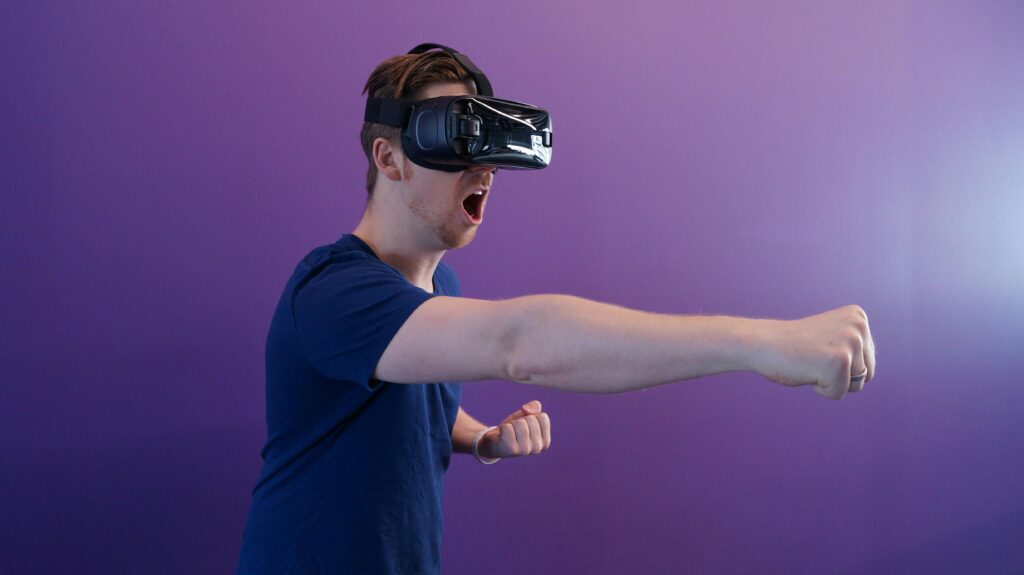
Table of Contents
Introduction:
In a world where technology continually pushes the boundaries of what’s possible, one innovation stands out for its ability to merge the digital and physical realms seamlessly – Augmented Reality (AR). This article aims to demystify AR, exploring its definition, functionality, real-world applications, and the exciting possibilities it holds for the future.
What is augmented reality?
Augmented reality, often abbreviated as AR, is a technology that enriches our perception of the real world by overlaying digital content onto it in real-time. Unlike virtual reality (VR), which immerses users in a completely simulated environment, AR enhances our existing surroundings with interactive digital elements. Whether it’s adding informative labels to objects, displaying virtual characters in your living room, or visualising data in a 3D space, AR creates a blended experience where the physical and digital coexist harmoniously.
How does augmented reality work?
At its core, AR relies on a combination of hardware and software components to function effectively. Devices such as smartphones, tablets, AR glasses, or specialised headsets serve as the viewing interface, while sensors, cameras, and software algorithms work together to detect the user’s environment and overlay digital content accordingly. By precisely tracking the user’s movements and the surrounding objects, AR ensures that the virtual elements seamlessly integrate with the real world, creating an immersive and interactive experience.
Applications of Augmented Reality:
Augmented reality has found applications across various industries, revolutionising how we work, play, learn, and interact with our environment. Some notable applications include:
Entertainment and Gaming:
AR has transformed the gaming landscape, allowing players to engage in interactive experiences that blend fantasy with reality. Games like Pokémon GO and Harry Potter: Wizards Unite have captivated millions of players worldwide, encouraging them to explore their surroundings and interact with virtual elements overlaid onto the real world.
Education and Learning:
In the field of education, AR has emerged as a powerful tool for enhancing learning experiences. Students can visualise complex concepts, interact with virtual simulations, and explore historical landmarks as if they were right in front of them. AR-enabled textbooks, educational apps, and immersive field trips are just a few examples of how AR is reshaping the way we learn.
Retail and Shopping:
For retailers, AR offers exciting opportunities to create immersive shopping experiences that bridge the gap between online and offline environments. By allowing customers to visualise products in their own space before making a purchase, AR enhances the shopping experience, reduces returns, and increases customer satisfaction.
Healthcare and Medicine:
In healthcare, AR is revolutionising patient care, medical training, and surgical procedures. Surgeons can use AR to overlay patient data, diagnostic images, and virtual guides directly onto the surgical field, improving precision and reducing the risk of errors. AR-enabled medical training simulators also provide students with realistic hands-on experience, accelerating learning and skill development.
Manufacturing and Engineering:
In manufacturing and engineering, AR is streamlining workflows, enhancing productivity, and improving collaboration. Engineers can visualise design prototypes in 3D, simulate assembly processes, and identify potential issues before they arise, saving time and resources. AR-enabled maintenance and repair guides also provide technicians with real-time instructions and visual aids, reducing downtime and increasing efficiency.
The Future of Augmented Reality:
As technology continues to advance, the future of augmented reality holds limitless possibilities. From AR contact lenses that seamlessly integrate with our natural vision to immersive holographic displays that transform our physical spaces, the potential applications of AR are vast and diverse. With ongoing innovations in hardware, software, and user experience design, AR is poised to become an integral part of our daily lives, revolutionising how we work, communicate, and interact with the world around us.
Conclusion:
In conclusion, augmented reality represents a groundbreaking technology that promises to reshape our perception of reality and unlock new realms of creativity, productivity, and innovation. Whether it’s revolutionising gaming experiences, enhancing educational opportunities, or transforming how we shop and work, AR is paving the way for a future where the boundaries between the physical and digital worlds blur into insignificance. As we continue to explore the possibilities of AR, one thing is certain: the journey ahead is filled with excitement, discovery, and endless opportunities for growth and exploration.